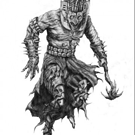old question:
[quote]i’ve tried:
<rendertarget name="viewport" sizedivisor="2 2" filter="false" format="rgba"/> <!--or-->
<rendertarget name="gbuffer" sizedivisor="2 2" filter="false" format="rgba"/> <!--or-->
<rendertarget name="viewport" sizemultiplier="0.5 0.5" filter="false" format="rgba"/> <!--or-->
<rendertarget name="gbuffer" sizemultiplier="0.5 0.5" filter="false" format="rgba"/>
but nothing causes the default renderpath viewport to render at half size.
I have successfully, rendered to a half size quad and sampled the texture, but I get antialiasing, even with the filter set to false. Filter set to true i get super aliasing. My desire is to get not aliases, and very crisp colors with no interpolated values.
I guess something that uses GL_TEXTURE_MIN_FILTER and GL_TEXTURE_MAX_FILTER set to GL_NEAREST. (at least that is what this link said http://stackoverflow.com/questions/17560335/glsl-render-solid-pixels-without-interpolation-or-antialiasing without getting into the c++ side of things…
Is there a simple way to view fullscreen but still render a very crisp no aliased render.
I’ve also tried to change the graphics settings to half my screen resolution then set fullscreen to true. That actually is decent, but what should look like a single pixel looks like a small plus sign.
The best looking results i’ve gotten are from the size divisor, but then I’m getting some color interpolation that i’d rather not have.[/quote]

